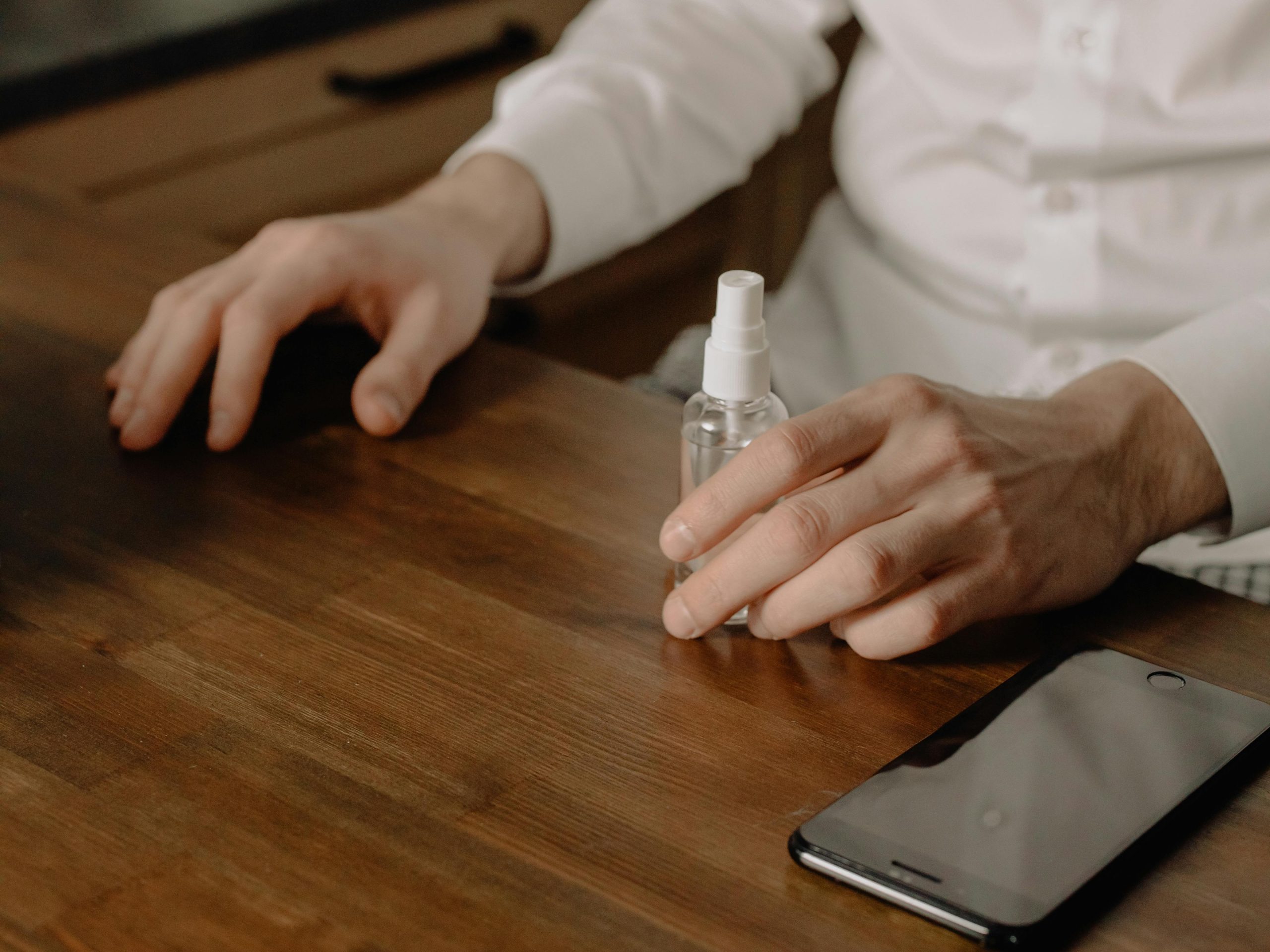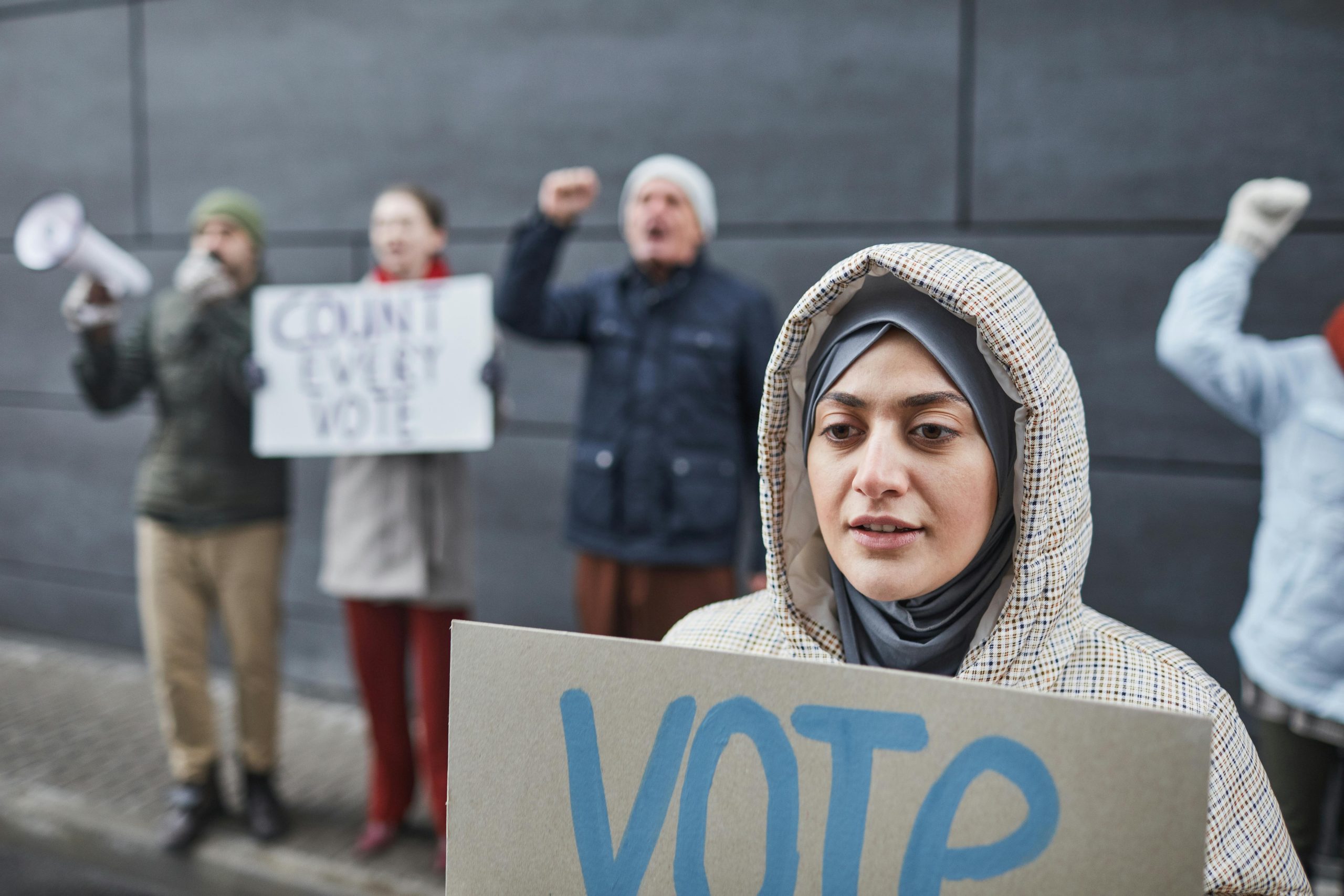Sugardating has become a popular way for people to connect, but it carries real risks if you don’t protect your privacy. Staying safe takes more than just common sense. Good OpSec, or operational security, is the backbone of privacy, anonymity, and control in these arrangements.
Sugardating in 2025 means dealing with fake profiles, phishing scams, and unwanted attention—sometimes even offline. Learning how to keep your personal information private, avoid scams, and manage your digital footprint puts the power back in your hands.
This guide covers the steps you need to keep your identity secure and your boundaries clear. Whether you’re new or experienced, you’ll find easy tips and real-world advice to help you stay safe, private, and anonymous as you navigate sugardating today.
Defining Sugardating OpSec: Core Principles and Current Risks
Staying safe in sugardating is about more than hiding a name or using a fake photo. OpSec, short for operational security, is your game plan for keeping secrets, stopping leaks, and making privacy a habit in every interaction. It’s about protecting yourself, your data, and your future no matter how tech or trends change.
 Photo by cottonbro studio
Photo by cottonbro studio
What OpSec Means in Sugardating
In sugardating, OpSec covers three pillars: privacy, security, and anonymity.
- Privacy: Keep personal details, like your real name or where you work, out of your profile and conversations. Even simple info can expose you if you’re not cautious.
- Security: Choose strong passwords and enable two-factor authentication on any dating platform or chat app you use. This shields your accounts against hacking and scams.
- Anonymity: Use messaging apps and emails that don’t tie directly to your main identity. Avoid sharing photos with identifying features—like the inside of your apartment or a landmark near your home.
OpSec is a continuous habit, not just a checklist. When you’re on top of your security, you make it much harder for anyone to connect your online activity to your real life. You gain peace of mind so you can enjoy sugardating on your own terms. For more on practical tips, check out this guide on the basics in sugardating safety.
The Latest Risks in 2025
Every year, risks change—new scams pop up, tech grows smarter, and privacy gets harder. Here’s what you’re up against right now:
- AI-powered scams: Scammers use advanced AI tools to craft fake profiles, copy voices, and personalize phishing attacks. These scams feel real and are tough to spot.
- Blackmail and sextortion: Bad actors may threaten to share private photos or messages unless you pay up, known as sextortion. These threats rose sharply in 2025 as noted by Norton.
- Doxxing: Sharing or leaking your identity, address, or social profiles can lead to harassment or worse, especially if someone feels slighted.
- Social stigma: Even now, the wrong person finding out about your sugardating can impact work or relationships, especially in communities with negative views.
- Phishing schemes and imposter scams: Links that steal your login info or contacts pretending to be someone else are a daily threat, targeting both newcomers and experienced users. Stay updated with the latest scam alerts for 2025.
Knowing what you’re up against makes it easier to build habits that protect you. Adopting strong OpSec is the single best way to cut your risk—no matter what this year throws at you.
Privacy Foundations: Setting Up Digital Boundaries
The first steps of real OpSec start with building strong digital boundaries. When sugardating, you’re not just protecting your personal information—you’re also separating your online connections from your real-world identity. This isn’t about paranoia; it’s about peace of mind. Let’s get practical about the basics that make your digital life safe and private.
 Photo by Ron Lach
Photo by Ron Lach
Choosing an Alias and Managing Your Profile
Curating your profile is the first layer of your privacy shield. Using your real name or photos that connect to your actual life breaks OpSec right away. Instead, pick an alias that’s unrelated to your social handles, work, or even your favorite hobbies.
Here’s how to keep your sugar life separate:
- Use a unique, consistent alias for sugardating only.
- Avoid photos reused from Instagram, Facebook, or LinkedIn.
- Strip EXIF data from images before uploading. Many phones embed location details automatically.
For more depth on setting these boundaries, read this guide on creating digital boundaries for online privacy.
When you create your sugardating accounts:
- Use a fresh, private email that doesn’t contain your real name.
- Keep your bio generic. Avoid mentioning specifics that can link back to your city, job, or inner circle.
Compartmentalizing Online Presence and Social Media
Keeping your sugardating presence separate from your personal or professional life is as crucial as locking your front door. That means your online identities must never overlap.
Tips for strict digital separation:
- Use different devices (or at least different browsers and profiles) for sugardating and your day-to-day browsing.
- Never link your sugar alias with your real social media accounts, not even on accident.
- Turn off sync features in browsers, apps, and cloud services.
Think of your compartments like having different rooms for different guests—there’s no need for anyone to enter every space. For step-by-step guidance, explore this useful resource on building digital boundaries.
Pro move: Monitor your tracks. Google yourself using your sugar alias and see what, if anything, comes up. The less, the better.
Securing Communication Channels
Once you’re ready to communicate, choose tools that protect your conversation history. This means ditching SMS and standard email for encrypted apps and anonymized contact methods.
Best practices include:
- Get a free number from apps like Google Voice or Burner instead of using your real phone.
- Use encrypted messaging apps such as Signal or Telegram, which don’t link to your personal identity.
- Enable disappearing messages wherever possible.
Multiple layers of security are better than one. Secure your email too—create a new email address just for sugardating; never mix it with your usual inbox. For general digital hygiene, including choosing safe channels, check out these top tips for cyber hygiene.
Always update your communication apps and use two-factor authentication. Even small gaps in your habits can leave you open to leaks or tracking.
Setting solid privacy foundations isn’t just smart—it’s freeing. Creating and enforcing digital boundaries means you control your own privacy story.
Anonymity and In-Person Safety Best Practices
Protecting your identity and personal safety keeps you in control through every step of sugardating, from DM to dinner table. Staying anonymous isn’t just about hiding your name online—it means making smart, simple choices during conversations and every meetup. This section walks you through proven practices for safe meetings, smart verification, and how to see trouble before it happens.
Meeting Safely: Public Spaces and Trusted Contacts
 Photo by cottonbro studio
Photo by cottonbro studio
Meeting someone in public is the first rule of in-person sugardating safety. You reduce the chance of things going wrong when you meet in spaces where help is near, like coffee shops, hotel lounges, or busy restaurants.
Best practices for in-person meetings:
- Pick public locations with good lighting and steady foot traffic.
- Arrange your own ride. Don’t let anyone pick you up or drop you off.
- Tell a trusted friend where you’re going, who you’re meeting, and when you plan to check in.
- Set up a safety call. Text your friend when you arrive and after you leave.
- Limit personal items you bring—keep ID, payment methods, and your phone handy, but don’t flash extra valuables.
Check out more practical tips on safe sugar dating meetups, including why you should stay sober and keep conversations light in early meetings. These simple steps offer strong security without making you feel on edge.
Handling Identification Requests and Verification
It’s normal for sugar partners to ask for a bit of proof that you’re real. But verifying each other shouldn’t mean giving away your whole life story. Think of verification as a handshake, not a background check.
How to verify without breaking anonymity:
- Offer current photos holding up a handwritten note or using a unique pose.
- Use video calls on apps that don’t reveal your main phone number or real name.
- Never send images of your government ID or private documents to strangers.
- If you use a dating app with verification tools, only verify through trusted, in-app systems.
Some sugardating platforms include verification steps built in, giving both sides some extra peace of mind. Learn how leading sites manage identity checks and user safety so you can decide what feels right. Always set clear boundaries before agreeing to any verification.
Red Flags: Spotting and Responding to Suspicious Behavior
Staying safe isn’t just about defense; it’s about seeing trouble before it gets close. Many dangers in sugardating show up early as red flags you shouldn’t ignore.
Key red flags to watch out for:
- Requests for money or gifts before meeting in person.
- Pressure to move conversations off-app right away.
- Dodging video calls or in-person meetings with constant excuses.
- Asking you to share private photos, ID, or personal details too soon.
- Inconsistent stories, dramatic promises, or a sense of urgency.
If you spot any of these, pause and consider if continuing is safe. Don’t be afraid to block or report anyone who makes you uncomfortable. For suggestions on recognizing fake profiles and unsafe behavior, check out this thread on identifying genuine users in sugardating.
You set your limits. Sticking to your instincts and learning the patterns of safe sugardating helps you keep control—both online and offline.
Financial Safety and Transactional Privacy
When you keep your financial life private, you take back control over more than just your cash flow. Every payment you make, or accept, can leave a digital trail. In sugardating, smart OpSec means using payment methods that hide your identity, setting boundaries around any money discussion, and knowing how to spot scams before they burn you. Let’s break down how to keep your wallet—and your privacy—airtight.
Anonymous Payment Tools and Their Limitations
 Photo by Tima Miroshnichenko
Photo by Tima Miroshnichenko
Anonymous payment methods are a popular go-to in sugardating OpSec. They let you send or receive money without exposing your name or banking details, but none are perfect.
Common anonymous payment options include:
- Cash: Still the most private. Meet in-person, make the handoff, and you’re done—no record.
- Prepaid or gift cards: Visa/Mastercard gift cards or retail e-gift cards keep your name out of the transaction. You can check out detailed tips on receiving funds with gift cards and e-gift options.
- Cryptocurrency: Bitcoin and similar coins let you send and receive value online without a direct ID match. But crypto wallet addresses can still be traced if reused.
- Anonymous payment apps: Some services let you set up an account with minimal or fake info, but most will request identity checks if transactions get flagged or amounts get high.
Limitations to know:
- Most anonymous tools have transaction limits and may not work for larger allowances.
- Some gift cards or e-cards cannot be cashed out and only work at certain stores.
- Crypto isn’t foolproof. Blockchain records are public, and sloppy habits—like reusing addresses—can put your privacy at risk.
- Relying on digital tools means trusting the service not to leak or share your info with authorities or hackers.
Whenever you use any “anonymous” tool, keep usage small, one-time, and don’t stack your entire privacy plan on a single method. For an in-depth look at which payment tools fit which scenarios, see these safe ways to receive money from a sugar daddy.
Protecting Your Accounts and Personal Information
True financial privacy starts with how you guard your accounts and personal info. Sugardating offers can quickly turn risky if you use everyday bank cards, email addresses, or numbers tied to your real self.
Smart practices to stay protected:
- Use a new email for sugardating money tools. Never share your everyday email or phone with a new connection.
- Enable two-factor authentication (2FA) for any account where you send or receive money—this extra layer stops most break-ins.
- Don’t store card pictures, crypto wallet passwords, or banking info on your phone without a secure app or password manager.
- Choose strong, unique passwords for each payment tool or app. Avoid using your pet’s name, birthday, or anything easy to guess.
- Turn off auto-login and notifications on payment apps. An unlocked phone on a date could reveal more than you expect.
And remember, your real name, address, and main bank account details should never be part of a sugardating arrangement. If someone pressures you for direct payment info, pause and reconsider. Most platforms and privacy experts advise keeping all transactions at arm’s length from your real accounts for exactly this reason. For more on safe practices, take a look at this short guide from Norton on sugar dating scams.
Practices to Avoid: Minimizing Financial Risk
There are payment and privacy choices that seem easy now but backfire fast in the sugardating world. A few quick moves can save you a ton of trouble later.
Stay away from practices like:
- Using PayPal, Venmo, or Cash App with your real name, photo, or profile info that links back to your main life.
- Accepting checks, wire transfers, or payment promises that are “pending”—these often bounce or can be reversed once you’ve shared something valuable.
- Giving out your bank account, routing number, or Social Security number for “direct deposits.” This info is all a scammer needs to clean out your account.
- Taking overpayments or requests to “refund the difference”—a classic scam where the original payment later disappears.
- Rushing to send money or buy gift cards before you’ve even met or had a video call. If it feels off, it likely is. Scammers prey on new users who are eager to please.
Recent data shows sugar daddy scams have gotten more clever by mixing fake screenshots, fraudulent “allowance” promises, and time pressure. The Better Business Bureau highlights how these tricks can leave sugar babies out hundreds or thousands when they slip up. For a closer look at how these scams unfold and how to spot them, review this post on the dangers of sugar daddy scams.
To keep things simple:
- Set firm boundaries on how, when, and through which tools you’ll accept money.
- Never let anyone guilt you into using a payment method you’re not comfortable with. Your safety comes first.
Strong habits around financial privacy aren’t just about avoiding loss—they give you control over how much of yourself you share, every step of the way.
Legal and Social Considerations in Sugardating OpSec
OpSec in sugardating isn’t just about tech and account settings. The social and legal side matters just as much. From local laws to dealing with outsider opinions, managing these risks protects both your privacy and your peace of mind. Before opening up with anyone, get clear on where you stand with the platforms you use and the social circles you keep.
Reviewing Platform Policies and Legal Issues
Platforms set ground rules that can help or hurt your security. Terms of service, moderation guidelines, and what counts as “acceptable” behavior shift from site to site. Get familiar with these rules early. Reading the fine print may feel tedious, but it protects you from sudden bans, leaks, or worse.
Not every country or state sees sugardating the same way. In some places, arrangements with an explicit quid pro quo edge can toe the legal line or cross it entirely. Ignorance never keeps you safe. Research your local laws, especially if sugardating starts involving money or gifts.
Useful tips for the legal side:
- Never discuss explicit arrangements over public messaging or within your platform bio.
- If possible, choose platforms that offer clear privacy controls and keep user data secure.
- Watch for red flags in terms of service—does the platform sell data, allow location tracking, or keep logs longer than needed?
- If you have doubts about a platform or legal gray area, consider reaching out to local support groups or looking up harm reduction resources.
The social view of sugardating changes with geography and community. Some cities or schools have strict rules even if “the law” is more relaxed. Always play it safe—if you wouldn’t want your employer or relatives to find out, don’t use your real information or upload photos that look too much like “you.”
Strategies for Managing Social Stigma and Discretion
Sugardating can trigger judgment, gossip, or worse, even from people you trust. Managing social stigma is about balancing openness with smart privacy moves. What happens if a classmate or coworker stumbles on your profile? What if a family member is more curious than supportive? Facing stigma is tough, but with the right strategies, you stay in control.
 Photo by Edmond Dantès
Photo by Edmond Dantès
Tips to minimize unwanted exposure:
- Use filters or block features to hide your profile from certain areas or people you might know.
- Never auto-sync your address book or social contacts with sugardating apps.
- Avoid sharing personal stories or photos that someone in your circle could recognize.
- Stay off group chats or public forums using your sugardating alias.
Sugar arrangements are more common than you think, but perceptions haven’t entirely caught up. Some studies even show that most people in these relationships experience only moderate levels of stigma (see recent research). Still, discretion is key to avoiding drama.
For practical guidance on privacy and reputation, check out real-life strategies from the sugar dating community. Keeping things separate—different photos, email addresses, and social circles—is your best shield. For many, discretion isn’t just about safety. It keeps boundaries clear and life simple.
Conclusion
Strong OpSec is what lets you enjoy sugardating without losing control of your privacy or safety. Keeping personal details private, using trusted tools, and trusting your instincts set you up for a safer and more confident experience. New threats pop up fast, but regular check-ins with your habits keep you a step ahead.
Treat OpSec as a habit, not a hurdle. Each layer of protection—alias, secure messaging, and smart payments—keeps your sugar life and real life truly separate. Your boundaries matter.
Stay curious, keep learning, and don’t be afraid to share your experience or ask questions in safe spaces. Thanks for reading and being proactive about your safety. If you found this guide helpful, pass it on, and stay tuned for more updates on staying secure and empowered in 2025.
Comments are closed